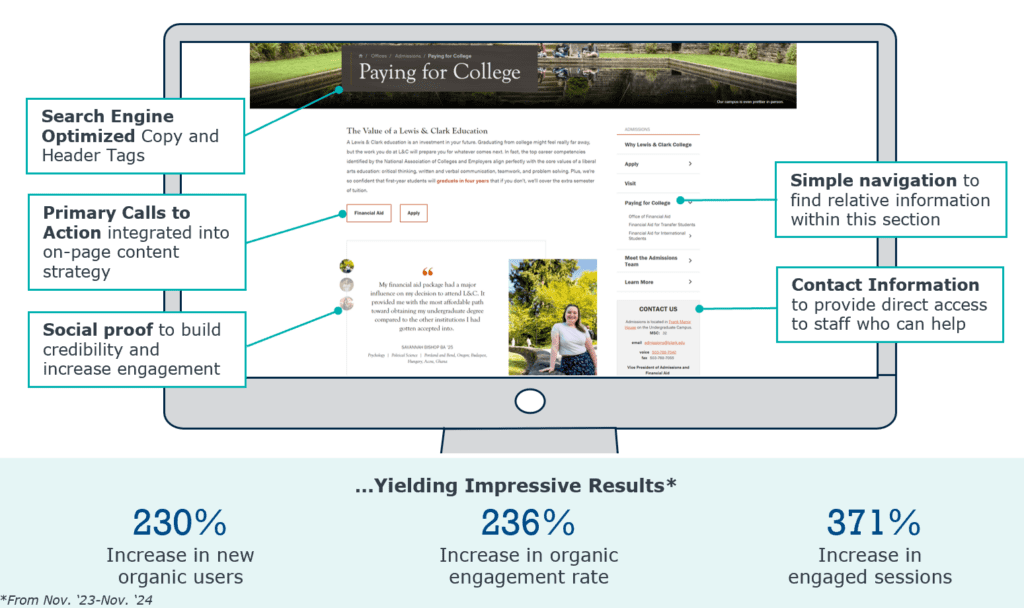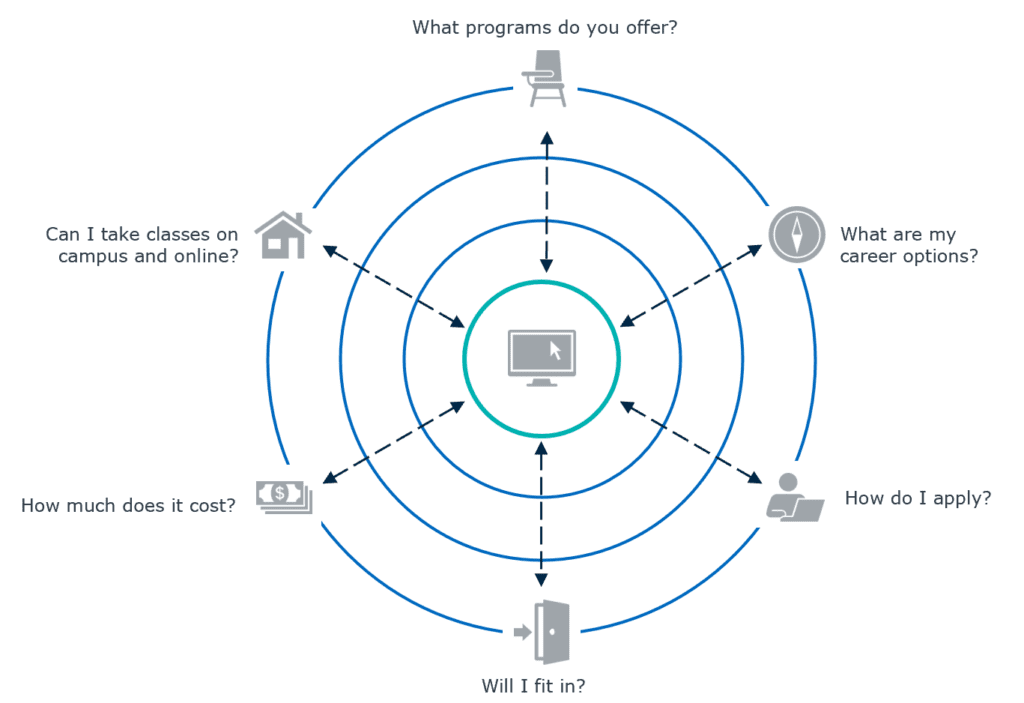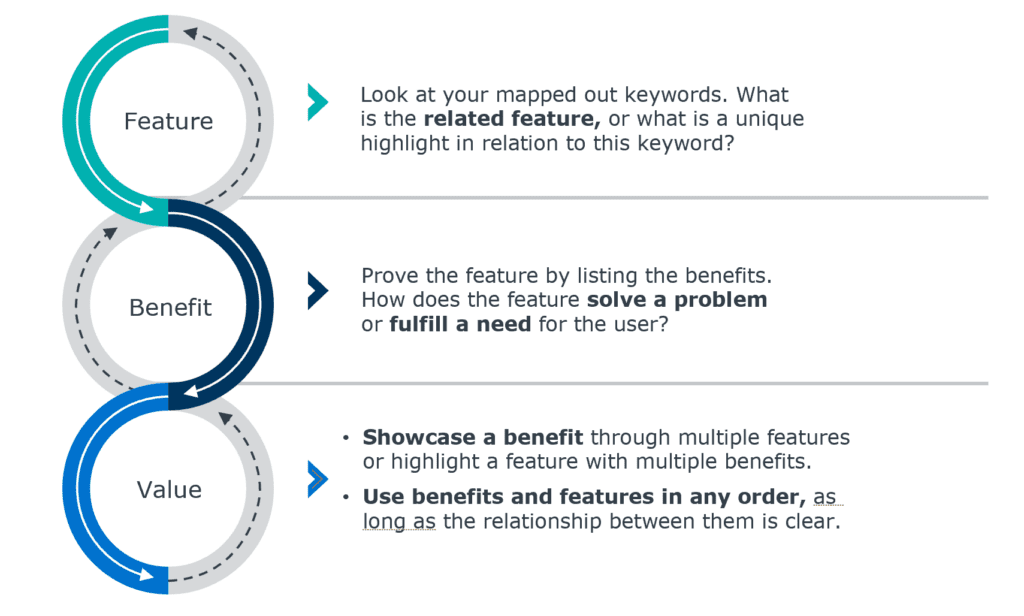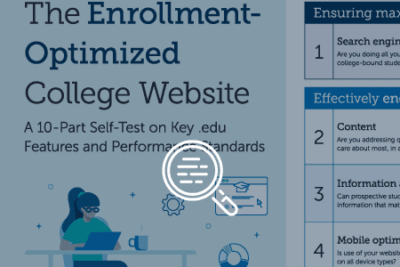How to write compelling copy for your college website
In my time as a content strategist at EAB—and as a card-carrying digital native—I’ve had the opportunity to share copywriting and content strategy with our partners for web, print, and email. While each platform is important, we know your website is the #1 resource prospective students use in their college research—and strong copy is essential in guiding students toward enrollment decisions.
If you’re struggling to create compelling copy for your .edu site, here are three ways to make it more effective and better at converting interest into action.
1. Be specific.
Specificity adds texture and vibrancy to copy, reinforcing your brand and creating interest for the reader. It plays a big role in differentiating your institution in a highly competitive landscape. When writing about the features of your school that every institution has—academic programs, cost, or student clubs and organizations—adding specificity will help demonstrate just what makes your institution stand out. Some ways you can get specific on your site? Make use of examples, rankings from reputable sources, and student or alumni testimonials.
Partner Spotlight: Lewis & Clark College uses social proof to boost cost page engagement

Plus, adding specificity enables you to back up broader claims with proof. Today’s prospective students demand ROI, so show rather than tell. This lends credibility to the points you’re making on your site. For example, the concept of affordability is more authentic and believable when it’s supported by a student or alumni testimonial saying as much.
Is your web content strategy missing these four essentials?
2. Be concise.
I once had an editor give me a great piece of advice, and that’s to treat copywriting as if you’re giving someone directions on how to get from one place to another. This keeps the focus on two things: One, providing the information your audience needs to know. And two, considering your audience and the context they bring to the table. Of course, you’d also avoid unnecessary information and take into account whether or not they’re familiar with the area.
Students are relying on your content to guide them through their journey

The same is true when it comes to writing copy for your site. As the expert on your institution, it can be challenging to pare down everything you know about your college or university into succinct sections. But to effectively engage your prospects—especially the digital pros—you’ll want to focus only on the content users need to take their next step, while staying mindful of their goals and preferences.
3. Provide value.
To motivate Gen Z and millennial prospects to enroll at your institution, you need to answer the “WIIFM”—“what’s in it for me?” On our Digital Agency team, we talk about providing user value with the terms “feature” and “benefit.” This means that on your site, you’ll want to alternate the school-specific features of your institution with student-centered benefits, cementing the utility of the information presented for the user.

For example, you might outline your institution’s commitment to affordability and the different types of financial aid you have available, followed by the financial aid support resources offered to students. Or you might discuss your academic programs’ high-caliber faculty and follow that up with information about positive student outcomes (WIIFM). Here, you’re demonstrating that the features you offer lead to positive, tangible results for your students.
Transform your website into a strategic enrollment asset
Your .edu should be an enrollment engine, and strong copy is just one way to fuel a prospect’s confidence in choosing your institution. EAB’s Digital Agency team—experts in web, SEO, and content strategy—can help optimize your site content to meet the expectations of digital natives like me. Transform your website into your most powerful recruitment tool to boost visibility, engage more users, and ultimately convert them into enrollments.
More Resources

3 best practices for your college website

Optimizing your college website to reach enrollment goals

More Blogs

The higher ed SEO checklist

How to use meta tags for higher ed SEO in the AI era
